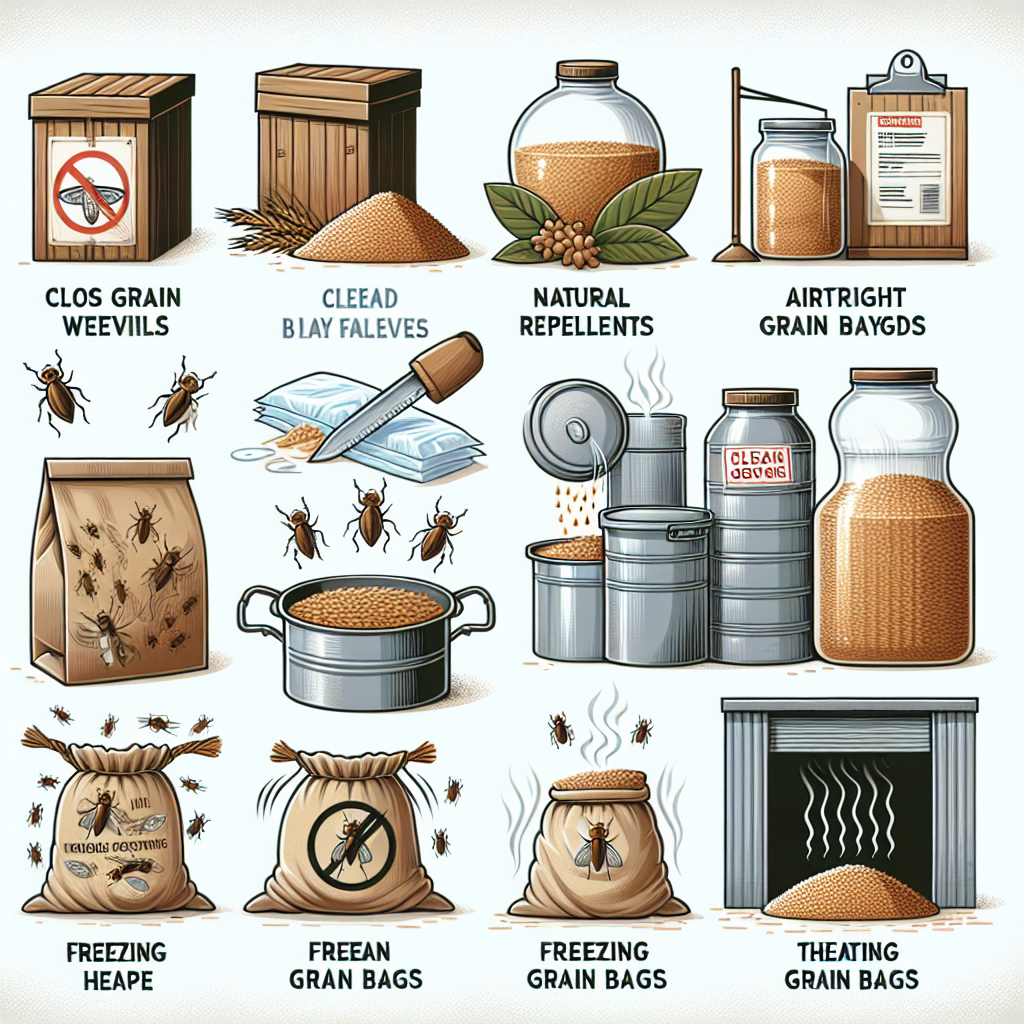California’s Garden Foes: Plants You Should Shun
Updated May 5, 2024 at 1:58 pm

Unwelcome Guests: Invasive and Harmful Plants in California Gardens
- Pet Friendly: Many common garden plants can pose threats to pets. It’s essential to know which ones are toxic to your furry friends.
- Light Requirements: Some invasive plants thrive even in poor light conditions, making them formidable foes to native species and garden favorites.
- Watering: Overwatering can encourage the spread of certain weeds and invasives. Understanding the watering needs of your garden is crucial in preventing unwanted growth.
- Humidity: A number of garden foes proliferate in high humidity environments. Keep a watchful eye on moisture levels to inhibit their growth.
- Temperature: Fluctuations in temperature can leave your garden vulnerable to invaders accustomed to variable climates.
- Difficulty: The complexity of managing these undesirable plants varies. Some may require simple removal, while others necessitate more aggressive control strategies.
Golden State gardeners are no strangers to the challenges posed by uninvited plant species. Invasive species not only disrupt the natural ecosystem but can also wreak havoc in your carefully cultivated garden. Well, let’s delve into the most notorious plant invaders you might be grappling with and arm you with the insights needed to maintain your horticultural haven.
Identifying the Garden Intruders: Common Invasive Plants
The first step in tackling these adversaries is to know whom you are dealing with. Let’s look at some of the most aggressive plants in California that you should keep at bay.
Pampas Grass (Cortaderia selloana) might be known for its towering beauty and feathery plumes, but don’t let its looks deceive you. This South American native can create dense thickets that push out indigenous flora. Targets for removal, Pampas Grass seedlings can be hand-pulled, but mature plants will require more substantial efforts, including cutting and herbicide treatments.
The Impacts of Invasive Plants on Your Garden Ecosystem
Invasives are adept at monopolizing resources like light, water, and nutrients, leaving little for native species. They can alter soil chemistry, inhibit native plant growth, and even pose a fire risk.
Take the example of the Yellow Starthistle (Centaurea solstitialis), an invasive that rapidly spreads through its copious seed production and can poignantly reduce forage for native wildlife. Early detection and consistent control, such as mowing before seed set or targeted herbicide use, are crucial.
Battling Back: Removal and Control Methods
Once you’ve identified the invasive plants in your garden, it’s imperative to take action. Efficient removal often requires a combination of techniques such as manual removal, mulching, and judicious use of herbicides.
For manual weeding, tools like the Fiskars Deluxe Stand-up Weeder are lifesavers. It allows you to extract weeds and their roots comfortably, minimizing strain. Reviews often highlight its ease of use and long-term durability.
Find This and More on Amazon
Chemical Control: When to Use Herbicides
Sometimes, physical removal of invasive plants is just not enough. In such cases, herbicides may be necessary to prevent regrowth effectively.
Products like Roundup Weed and Grass Killer get mentioned often for their effectiveness on a broad range of invasive species. Strongly adhere to the instructions, and ensure you’re applying them in a way that minimally impacts surrounding plants and animals.
Beneficial Flora: Planting Allies in the Garden
What’s better than fighting garden foes? Having allies! Planting robust, native species that compete with invasives can help deter unwelcome intruders.
California Poppy (Eschscholzia californica) not only adds vibrant color to your garden but also is adaptable and can keep less desirable plants at bay. Plus, it’s a joy to see these poppies swaying in the Californian breeze, isn’t it?
Why Timing Matters: Seasonality and Invasive Plant Control
Understanding the growth cycles of invasive plants can provide a strategic advantage. Targeting them during their vulnerable phases, such as germination or flowering, can be more productive.
For instance, the Giant Reed (Arundo donax) can be effectively managed by cutting the canes and applying herbicide to the freshly cut stumps during late summer, when the plant is moving nutrients to its roots.
Understanding the Laws: Regulations Around Invasive Plants
It’s not just about your garden’s health – there are legal implications too. California has regulations concerning invasive plant management due to their impact on agriculture and natural resources.
Before you consider any eradication methods, ensure that you are aware of any permits or notifications required, especially when using chemical control measures.
Expert Advice: Consulting With Professionals
When in doubt, consult with local garden centers, horticulturists, or the California Invasive Plant Council. Their knowledge can be invaluable concerning plant identification and management strategies.
They might recommend products like the Corona Clipper Hand Pruner, which is often lauded for its precision and ergonomic design, making it a go-to for controlled plant removal.
Find This and More on Amazon
Wrap-Up: The Battle Against California’s Garden Foes
Engaging with California’s garden foes is no small task. It requires vigilance, strategic action, and often, a little bit of elbow grease. Remember, it’s not just about the immediate aesthetics of your garden, but also the long-term health of your local ecosystem.
Stay informed about how to identify and manage these invasive species. With determination and the right techniques, you can protect your patch of paradise from these green invaders. Happy gardening, and may your efforts yield a garden full of native beauty!
Choosing the Right Tools for the Job
Equipping yourself with the correct gardening tools is an integral part of controlling invasive species in your garden. A tool’s effectiveness can make a big difference in how much labor you’ll exert and the success of removing these plant pests.
The True Temper Forged Dandelion Weeder is a favorite among gardeners for its durable build and pointed fork tip, which is perfect for digging out tap-rooted weeds like dandelions. It’s praised for how easily it can get to the root of the problem, promoting a weed-free garden without the use of chemicals.
Find This and More on Amazon
Mulching: A Natural Barrier Against Weeds
Another weapon in your anti-invasive arsenal is mulch. A thick layer of mulch suppresses weed germination by blocking sunlight, and it also retains soil moisture which benefits your preferred plants.
Organic mulches, like the Cedar Grove Natural Cedar Chips, have the additional boon of a pleasant scent and the ability to deter some pests with their natural oils. Many have found that a 2-3 inch layer works wonders at keeping those invasive weeds at bay while adding a polished look to garden beds.
Maintaining Your Equipment for Longevity
Taking care of your gardening tools ensures they remain effective for future battles against invasive species. Regular cleaning and sharpening can extend the life of tools like pruners and weeders substantially.
Tool maintenance kits like the SHARPAL 103N All-in-1 Garden Tool Sharpener are invaluable for keeping blades sharp and rust-free, offering the precision needed for targeted weeding without damaging your garden plants.
Combating Weeds Through Landscaping and Design
Sometimes, the layout of your garden can contribute to the proliferation of weeds and invasive plants. Strategic landscaping that minimizes bare ground can help deter invaders by providing less opportunity for them to take root.
Ground cover plants, such as Dwarf Periwinkle (Vinca minor), provide a dense carpet that effectively shields the soil from sunlight and keeps weed seeds from sprouting. They’re praised for their coverage capability and the charming flowers they produce.
The Role of Water Management in Weed Control
Watering techniques can also play a crucial role in managing garden foes. Overwatering can create the perfect conditions for weeds to thrive. Conversely, using drip irrigation systems can direct water to your desired plants, reducing the chances for weeds to grow.
A drip irrigation system like the Raindrip R560DP Automatic Watering Kit comes highly recommended. Its efficient water delivery not only saves water but also targets plants you want to grow, rather than the invaders.
Support from Technology: Apps for Plant Identification
In this tech-savvy age, there are digital tools available to help identify unknown plants in your garden. Mobile apps like PictureThis allow you to take photos of plants and provide instant identification, which is a boon when trying to figure out if a plant is friend or foe.
Users have found apps like these especially helpful, as they sometimes come with additional care tips and can help you quickly determine whether you’re dealing with an invasive plant.
Creating a Maintenance Schedule for Ongoing Garden Health
Consistency is key when it comes to keeping invasives at bay. Developing a maintenance schedule for your garden can ensure that you’re regularly checking for and addressing any unwanted plant growth.
Consider setting periodic reminders to inspect your garden, prune overgrowths, and apply necessary treatments. A little bit of regular maintenance can prevent a lot of headaches with invasive species down the line.
Making the Most of Community Resources
Local community resources can be a treasure trove of information and assistance. From extension services to local garden clubs and online forums, tapping into communal knowledge can help you manage and even prevent the spread of invasive plants.
These groups often share valuable insights and can keep you updated on any new invasive species that might be popping up in your area. There’s strength in numbers, and community support can make all the difference.
Learning from the Past: The History of Invasive Species in California
Understanding how and why certain plants became invasive in California offers lessons we can use to prevent future introductions. Many invasive species were initially brought for ornamental purposes without realizing their potential to overrun natural environments.
Knowledge of this history can make us more cautious about introducing non-native plants into our gardens and inspire us to choose plants that are less likely to become a problem in the future.
Wrap-Up: The Battle Against Californias Garden Foes
Engaging with Californias garden foes is no small task. It requires vigilance, strategic action, and often, a little bit of elbow grease. Remember, its not just about the immediate aesthetics of your garden, but also the long-term health of your local ecosystem.
Stay informed about how to identify and manage these invasive species. With determination and the right techniques, you can protect your patch of paradise from these green invaders. Happy gardening, and may your efforts yield a garden full of native beauty!
“`html
The Environmental and Economic Impact of Invasive Plants
The presence of invasive species in California extends beyond garden aesthetics and plant health. They pose significant environmental and economic threats, including disrupting local ecosystems and economies reliant on agriculture and tourism.
Fountain Grass (Pennisetum setaceum), for example, is not only a fire hazard but also competes with native species for resources. Removal of this grass is tough due to its prolific seed production, requiring persistent efforts with both manual and chemical control.
The Role of Education in Preventing Plant Invasions
Education plays a critical role in preventing the spread of invasive species. Gardeners informed about the risks associated with certain plants are less likely to introduce them into their landscapes.
Programs and workshops led by organizations such as the University of California Cooperative Extension provide valuable information on identifying and managing invasive plants. Participation in these educational opportunities is highly recommended for garden enthusiasts.
Encouraging Native Pollinators by Selecting the Right Plants
Choosing plants that encourage native pollinators like bees, butterflies, and birds can have a double benefit: not only do they add life and beauty to your garden, but they also help ensure the health of local pollinator populations.
Plants like California Lilac (Ceanothus spp.) are praised for their ability to attract an array of beneficial insects and birds, adding ecological value to your outdoor space.
Integrated Pest Management: A Holistic Approach to Weed Control
Integrated Pest Management (IPM) is a holistic, environmentally friendly approach that combines biological, cultural, physical, and chemical tools to manage garden pests, including invasive plants.
Implementing IPM practices can result in less reliance on chemical herbicides and a healthier garden ecosystem. Local agricultural extensions can provide IPM guidelines tailored to California’s environment.
Understanding and Promoting Biodiversity in Your Garden
Promoting biodiversity is about creating a balance in your garden where every organism, from the smallest insect to the largest plant, has a role to play. A diverse garden is more resilient to pests and diseases, including invasives.
By planting a variety of native species, you encourage a healthy ecosystem. Manzanita (Arctostaphylos spp.), with its attractive flowers and evergreen leaves, is a native shrub that offers food and shelter to local wildlife, embodying the essence of a biodiverse garden.
Adapting Gardening Practices to Climate Change
Climate change is shifting the way we garden, and strategies that worked in the past might not be as effective today. Adapting your gardening techniques to accommodate these changes is crucial for managing invasive species.
Investing in plants and gardening methods that are resilient to extreme weather patterns is becoming increasingly important, and local nurseries can guide you in selecting species that are well-suited for California’s evolving climate.
Wrap-Up: The Battle Against Californias Garden Foes
Managing invasive plants in California requires a multipronged approach, and as a gardener, you play a vital role in this ongoing battle. By staying informed, choosing the right plants, and utilizing the best strategies for removal and control, you contribute to the health of your garden and the broader ecosystem.
With patience and perseverance, you can make a positive impact on your environment. Your gardening efforts are not only a labor of love but also a commitment to preserving the natural beauty and biodiversity of California.
“`
Shop more on Amazon


